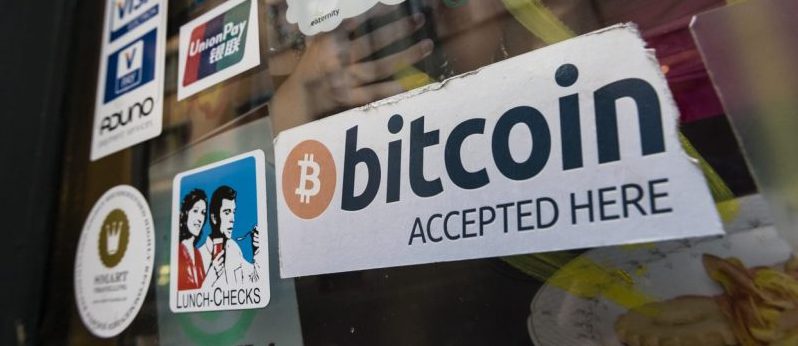 Do you remember when you first heard terms like cloud computing and Internet of Things? They seemed so futuristic just a few years ago, right?
Do you remember when you first heard terms like cloud computing and Internet of Things? They seemed so futuristic just a few years ago, right?
Now they’re the highlight of various conferences and the topic of radio ads and even television commercials. That’s when you know things have gone mainstream.
But as the hype winds down, you’ve probably noticed more chatter about the next newest thing: blockchain. Lawmakers created a Congressional Blockchain Caucus this year, the General Services Administration recently launched the U.S. Federal Blockchain program, and agencies are eyeing blockchain pilots.
To better understand what this technology is, how it works and what it means for government agencies, GovLoop sat down with Tomicah Tillemann, co-founder of the Blockchain Trust Accelerator and a member of the advisory board of the BitFury Group, a Blockchain infrastructure provider. His comments were edited for length and clarity.
GOVLOOP: What is blockchain?
TILLEMANN: At its core, blockchain is a record. But blockchain has two really important distinctions that are new. The first is that blockchain is a distributed record, so it is held simultaneously on thousands of computers all over the world. All of those computers are constantly checking each other to ensure that any information that goes into the blockchain is supposed to be there, and that only information that is authorized to be added to that record is there. And because you have these thousands of computers that are constantly working to guarantee the integrity of the system and the integrity of the information, it gives you a much higher degree of trust in the accuracy of the record than we’ve ever had in really any system before.
The second thing about blockchain is that the way the system is designed, each new entry into the record is linked mathematically to every entry that’s come before it. The only way that you can change anything in that long chain is to change everything in that long chain. Doing so would require an extraordinary amount of computing power. The estimates are that for the public blockchain, the bitcoin blockchain, it would take between 10 and 100 times the total computational power available to Google in order to go back and rewrite the record. It allows you to build systems and processes that are effectively beyond the reach of bad actors or corrupt officials to meddle with or manipulate.
GOVLOOP: When you reference the thousands of computers all over the world, who owns them? Who can connect to the system?
TILLEMANN: The amazing thing about the system is that it is open source. You could, if you wanted to, set up your computer to be a part of this network. When we’re talking about the bitcoin blockchain, the reason you have all of these thousands of computers dedicating time and energy to maintaining the integrity and security of the system is that they’re being rewarded for that with bitcoin. Every time there’s a new entry into the blockchain record, computers all over the world race each other to complete a really complicated math problem. Whoever succeeds, whoever gets the answer to that math problem first, is rewarded with bitcoin.
GOVLOOP: Is there an analogy you can use to explain how blockchain works?
TILLEMANN: So you can think of it in a couple of different ways. If you’re talking about the security of the system and why it provides a superior security to existing data storage systems, right now the way we store data is to put it all inside a single house and put a really good lock on that house, then hope that nobody can break the lock. But unfortunately, if they get inside the house, if they break the lock, or climb through a window and get inside the house, they’ve got access to all of the data. Blockchain is different because to gain access to the system, you would have to break into thousands of houses all over the world at exactly the same time, all of which have amazing locks on their doors, and all of which are constantly checking each other to make sure that the locks are secure and that the security cameras are on.
On the other side, you can also think of blockchain as rails. Those rails run between any two computers that are part of the system. But what it means is that I can put anything of value — a vote, a medical record, a Social Security number, money, or a grant from a government organization — and I can put that resource in a train car and send it across those tracks to anybody on the network. That transfer is going to be recorded in the network. The technology was originally conceived for financial purposes, to move currency back and forth. But what people have recognized is that if you can securely transfer money back and forth, you can also securely transfer anything else of value.
GOVLOOP: How much human interaction is required for this all to work?
TILLEMANN: In the past, if we wanted to send anything of value to each other over the internet we needed intermediaries to facilitate that process. If you think about what’s required for me to send you money, via credit card or PayPal, there had to be a trusted entity that would sit in between us to validate that transaction and guarantee that the money came from me and was transferred to you. The amazing thing about blockchain is you don’t need an intermediary. I can send whatever it is directly to you, and I don’t have to go through another party.
This is a vast network, like the internet, that nobody owns, that operates all over the world. So long as you and I have access to that network, we can exchange something of value without having to go through a third party. That’s a game changer for a lot of different industries. My strong belief is that it has the potential to provide a big upgrade for the operating system of our democracies around the world.
GOVLOOP: If I’m trying to send money via blockchain, how would I do that?
TILLEMANN: You need what’s called the digital wallet, and that digital wallet is where you store the record of the resources that have been sent to you and the resources that you’re sending to others. Other than that digital wallet, you don’t really need anything to participate in the system.
As time evolves, I expect that we’ll see more and more organizations that move their work onto blockchain. As that happens, you may see different apps and different interfaces that facilitate access to those assets and access to those systems. But part of the beauty of the entire enterprise is that you don’t need to build a lot of infrastructure to make this work because the infrastructure is a public good. Anyone with access to the internet can participate and share in those benefits.
GOVLOOP: Can you go into more detail about how blockchain might impact a country’s economy?
TILLEMANN: One example that we have seen, together with our partners at BitFury, is in the Republic of Georgia. The government came and asked for help moving their property registry onto blockchain. Georgia already had, according to the World Bank, the third best property registry in the world. But they had a challenge, which was that if you wanted to sell your house in Georgia, it would take days to complete the transaction and cost hundreds of dollars in fees in order to ensure that everything had been properly registered.
The other issue is that in many countries, if you have a nice piece of property by the lake and I want it, and [let’s say] my cousin works for the property registry, they could wipe out any evidence that it had been yours at any point in time.
When you move a system like that onto blockchain, a couple of things happen: The first is the time required to complete a transaction drops from days to about 10 minutes — a dramatic improvement in efficiency. The second is the cost of completing a transaction shifts from hundreds, or in the United States thousands of dollars, down to a couple dollars at most. A huge improvement in the cost of registering a title.
The final piece of this is that you have an incredibly high degree of trust in the transaction. Even if you have a corrupt official, they can’t go and wipe out evidence that the property was mine to begin with. After the transaction is complete, you or anyone else can check on the public network and see that it’s been registered properly. I think blockchain provides a solution to the most compelling challenge of our time, which is how to restore trust in institutions.
Check out part II, where Tillemann explains how blockchain can be used to hold government’s accountable and who is leading in the federal space when it comes to blockchain.





Leave a Reply
You must be logged in to post a comment.